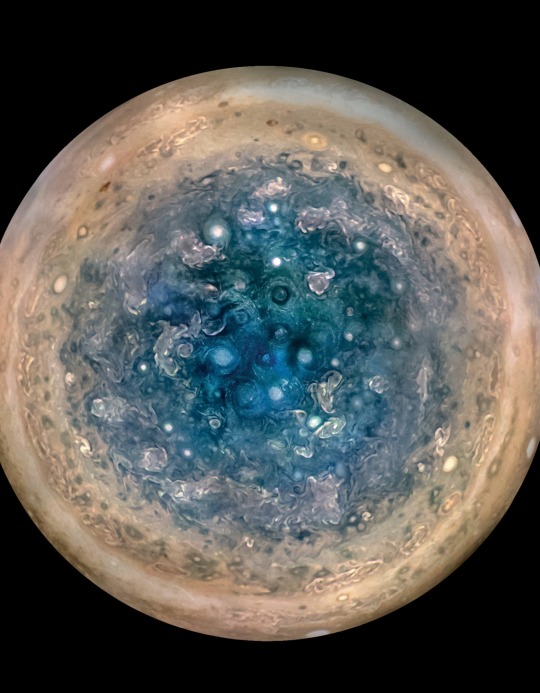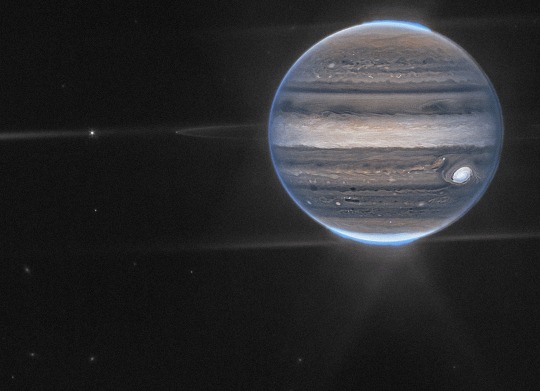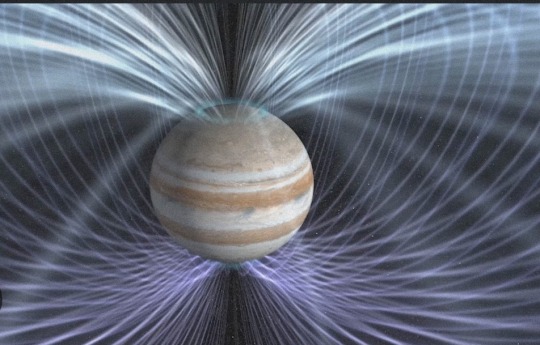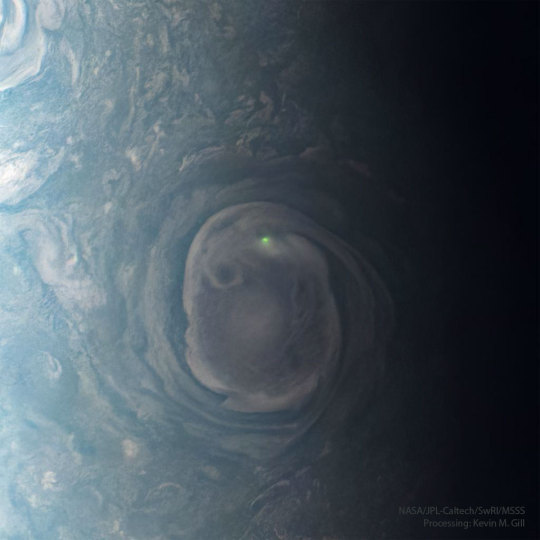#jovian planet
Text

Jupiter, Io, and Ganymede on September 29, 2023 // Makrem Larnaout
#astronomy#astrophotography#solar system#planet#gas giant#jupiter#great red spot#moon#jupiter's moons#jovian moons#galilean moons#io#ganymede#gif
835 notes
·
View notes
Text
The Sheridan Tapes episode 59

#jovians: we assess threat level of species on different planets to determine if we need to destroy them#you there! represent your species#kate: fambily. sam: trauma dump#jovians: .... yeah we should leave this planet alone...#also ohhhh now i get the connection between anne bonny sam bailey and sam walsh...#tst relisten#the sheridan tapes#i looked up Fulgurite and they look really cool. id also think aliens if i saw them.#also on the nose irony that the aliens show up to judge humanity on the site of atomic bomb experimentation#and find there poor sam and kate of all people lol
9 notes
·
View notes
Text
it’s really not that deep (“it” of course being the atmosphere of jovian planets)
0 notes
Note

:>
:0c
thxs you !
#ori speaks#thank you the whole jovian moon of callisto#tell your planet i said i love them /platonic
1 note
·
View note
Text
Notes on Astronomy
The Earth is a planet inside of a solar system, which is part of the Milky Way Galaxy, which in turn is part of a Local Supercluster of Galaxies. All these galaxies comprise the known universe. The universe is the sum of all discovered, and undiscovered, matter and energy.
One astronomical unit (AU) is Earth’s average distance from the Sun, which is around 150 million kilometers. One light year…

View On WordPress
0 notes
Text
Can we talk about the fact that one of the planets in our solar system was almost named
George?
0 notes
Text

Jupiter’s South Pole
0 notes
Photo

Moon Shadow on Jupiter : What is that large dark spot on Jupiter? It's the shadow of Io, one of Jupiter's largest moons. When Jupiter's moons cross between the Jovian giant and the Sun, they created shadows just like when the Earth's moon crosses between the Earth and the Sun. Also like on Earth, if you were in a dark shadow on Jupiter, you would see a moon completely eclipse the Sun. Unlike on Earth, moon shadows occur most days on Jupiter -- what's more unusual is that a spacecraft was close enough to record one with a high-resolution image. That spacecraft, Juno, was passing so close to Jupiter in late February that nearby clouds and the dark eclipse shadow appear relatively large. Juno has made many discoveries about our Solar System's largest planet, including, recently, rapidly expanding circular auroras. via NASA
1K notes
·
View notes
Text
Cecilia
Sounds are powerful. That goes without saying- the most severe (?) sounds you'll find your average sentient species making are soft clicks/rumbles. Most languages developed through touch, or something like sign language. The species that can make noise don't have much control over their pitch. They don't need to. Others "hear" with specialized pads, designed to pick up the slightest vibration... (Don't ever touch them, you hear?) Anyway-
You know how the human voice can literally break glass? Yeah, so do the higher-ups in any organization that knows what they're doing. In the Rhusngi's Immigration fleet, crews are chosen through a complex AI system. Applications take Jovian aeons to process- But this ain't Rhusngi Immigration.
There's no one name for what we are. A bunch of idiots, taking random jobs here and there- wait, what? No, we're not- We just do deliveries! *unintelligible alien muttering* Sure, it can be dangerous, but we're not stupid. Our crews communicate, for Dsheng's sake.
I understand your concern- Ship 7 does have a more, er, potent blend of species... they balance each other out- The two humans? Hhhhhhharmless. *xe hisses, frustrated.*
。.:*☆*: .。:*.:*☆☆*
"Aaaaaalright, Bumblebees! Another day, another dollar! Everybody, up, up, up!"
Kit's voice crackled with enthusiasm and static. It reverberated through the black-and-yellow ship, signaling the start of another shift. Most of us had been on board for "decades"- that's what Faizan says, at least. We've gotten used to each other by now, what with all of us being so... different.
It's been a few months since we picked up Kit and, erm... There have been some difficulties, sure, but yeah. It's made us closer, if anything. -Besides, now it's even. Seventh ship, seven crew members! Faizan chimes in, startling the mantis-like being. She promptly donks him upside the head with one blade-like arm.
He chuckles, then looks her in the eye- or tries to. "We just got some new cargo. Needs scanning." He holds a small device up to his mouth and speaks into it, making a series of clicks. He presses a button, adding- "Kit, you too- be at the loading deck in 5."
☆☆
Pretty soon, most of the crew joined Needih (insectoid), Faizan (human), and the new cargo. Kit (also human) was late- as per usual. But eh, she's on time when it really matters...
The cargo wasn't particularly large today, nor moving- thank God. "...And it's our turn to scan it in, got it?" Faizan lectured the younger human as he carried a box across the room. The two got to work, moving packages from the hatch as the rest of the crew chattered away.
Kit laughed when he stopped talking-
"You know you're breaking my heart..."
Faizan stopped in his tracks, a smirk on his face.
"You're shaking my confidence, daily." He replied.
--Here's a link for y'all--
He didn't know what he expected- The song was old. Really old. And Kit had never even set foot on Earth...
Kit started tapping the side of the box and stomped to a rhythm Faizan hadn't heard in forever-
"...'Celia... you're breaking my heart..."
Faizan's eyes lit up. Of course Kit sang the higher part, and of course he knew the lower one.
"You're shaking my confidence daily!"
Needih was in awe. She felt her shell shake with the vibration- it was impossible to describe. Sometimes, on her home planet, wilder sounds would align- but that was incredibly rare. Almost mythical. The crew all "heard" in different ways. We're lucky 'cause they're similar enough to communicate...
"... I'm beggin' you please to come home!"
Jaws dropped. Scrounge and Sdaer put down their drinks, eyes wide. Scrounge let out a deep rumble and tilted his ursine head. Faizan rolled his eyes and kept singing- the crew had never seen him like this...
The two humans sang like nobody else was in the room. They felt a sense of belonging, of harmony, like nothing else in the universe.
For the first time in years, Faizan dropped the package. He and Kit tapped out a beat on every available surface- the walls, the floor, even the boxes. And they laughed. It scared the hell out of the rest of the crew, who were too stunned to do anything but stare.
Goodness knows how Kit was able to sense Faizan's movements before they happened- and vice versa. Sure, they both missed a beat here and there but what did you expect? They're only human.
"Pick it up, pick it up, pick it up!" He exclaimed, conveniently skipping to the good part. Kit grinned.
☆☆
"God, I haven't sang in years..." Faizan paused and looked around the room. The crew was just. In shock.
"To, skh..." Sdaer struggled with the English. "To quote you, what the fUCK was THAT?"
"That was harmony." Kit said with a smile. And the humans just? Got back to work? Kit hummed softly, and Faizan smiled (without baring his teeth, to be polite- as if he and the newbie didn't just break goodness-knows-how-many-galaxies' regulations).
"How do you know Simon & Garfunkel, anyway?" the captain asked.
Kit looked down at the box they were holding. "...Does it matter?"
"No. No, it doesn't."
#humans are space australians#humans are weird#humans are space orcs#humans and aliens#short story#i'm gonna make a whole series out of this... maybe#just you wait#if this has been done before lmk pls#found family#what should i call this?#to be continued
183 notes
·
View notes
Text
JUPITER HAS A LARGE MAGNETIC FIELD THAN PREVIOUSLY EXPECTED??
Blog#366
Saturday, January 13th, 2024.
Welcome back,
NASA's Juno spacecraft has mapped the strong magnetic field at Jupiter, revealing a surprising asymmetry between the northern and southern hemispheres that could lend insight into what's going on within the gas giant.
Jupiter hosts the most powerful magnetic field of all the planets in our solar system, cranking out a field close to 20,000 times stronger than Earth's.

Juno has braved that magnetic field during the probe's close approaches to the planet since arriving in July 2016; it skims about 2,500 miles (4,000 kilometers) above the planet every 53 days over the course of elongated orbits.
A new paper, published on (Sept. 5) in the journal Nature, pulls together Juno's measurements to create the most detailed map yet of the Jovian magnetic field at different depths, painting a complex picture.

"We find that Jupiter's magnetic field is different from all other known planetary magnetic fields," the authors, led by Kimberly Moore of Harvard University, wrote in the paper. Like Earth, Jupiter's magnetic field has a primary north and south pole, close to the planet's actual poles as it rotates. But while the gas giant's south pole is relatively orderly, the planet's north pole has one narrow magnetic hotspot amid more chaotic patches of magnetic field, where positive and negative sections don't have concrete counterparts."

"And the planet has another big magnetic "south pole" close to the equator the researchers refer to this equatorial patch as a "great blue spot" in their paper, in contrast to the planet's swirling Great Red Spot storm. (Blue is often used in diagrams to indicate the negative part of a magnetic field.)
According to a News and Views column accompanying the article, Jupiter's magnetic field is likely generated by a swirling mass of hydrogen deep within the planet.

Crushed to incredible pressure, this material becomes a metallic liquid that can conduct electricity and generate a magnetic field when stirred. The heat within the planet, left over from Jupiter's formation early in the solar system's history, creates convection currents that get the liquid moving — not to mention the gases on top, leading to the planet's roiling clouds and storms.
Convection within Earth's iron core also generates our planet's magnetic field, but Earth's field is much more straightforward: mostly positive at one pole, mostly negative at the other, with no particular pattern to the parts that diverge from that.

This strange magnetic field on Jupiter is a hint to what's going on inside the planet. The researchers suggest the Jovian core could be larger and more dilute than previously thought, or the stable layers of fluid within Jupiter could partition off parts of the planet's interior, altering the flow, according to the News and Views story. The state of the planet's field could even — although the paper's researchers suggest this is unlikely — mark the middle of a magnetic field reversal process.
Originally published www.space.com
COMING UP!!
(Wednesday, January 17th, 2024)
"CAN HUMANS SURVIVE ON MARS??"
#astronomy#outer space#alternate universe#astrophysics#universe#spacecraft#white universe#space#parallel universe#astrophotography#jupiter
95 notes
·
View notes
Text
2 hours of Jupiter and its moons Europa, Io, and Ganymede on October 27, 2023 // Mo David
#astronomy#astrophotography#video#solar system#planet#gas giant#jupiter#moon#jupiter's moons#jovian moons#galilean moons#io#europa#ganymede
107 notes
·
View notes
Text
Where is Rhax?
We get several different planet and moon names in the Cohort Intelligence Files in reference to peoples' birthplaces: Trentham, Ida, Tisis, Ops, Rhax, and Cypris.
Trentham seems to be Mars (named after the NZ military base that houses command and training); Ida is possibly Saturn's moon Rhea (Ida was the nymph tasked by Rhea to look after her infant son Zeus and to hide him from his father Saturn); Tisis and Ops are likely moons of Neptune ("tisis" is Ancient Greek for "vengeance" and Ops is a Roman goddess, mother of Neptune); and Cypris is likely Venus itself (Cypris is a title for Aphrodite, the Greek equivalent of Venus).
But there's no straightforward connection like this for Rhax.
Technically, "rhax" means a grape or a berry in Ancient Greek and appears in some animal taxonomy for spiders with bulbous bodies. It could, I suppose, be a very tenuous wine joke about one of the Jovian moons, Ganymede, named after the cup-bearer of Zeus. But none of the other names work on that level of extension.
Which leads me to wonder if it's not in the Dominicus system - could Rhax be a colonised planet in the empire?
Given the Fifth's role in imperial bureaucracy, is Magnus the House equivalent of a British child of the Raj, born out in the empire to high-ranking colonial administrators?
#the locked tomb#tlt meta#magnus quinn#the fifth house#Presumably Magnus and his sisters were sent back to the Fifth to be educated#Hence teenage Abigail and Magnus meeting at what one can only assume was Evil Necromancer Eton
69 notes
·
View notes
Photo

2023 June 25
Lightning on Jupiter
Image Credit: NASA/JPL-Caltech/SwRI/MSSS; Processing & License: Kevin M. Gill
Explanation: Does lightning occur only on Earth? No. Spacecraft in our Solar System have detected lightning on other planets, including Mars, Jupiter and Saturn, and lightning is likely on Venus, Uranus, and Neptune. Lightning is a sudden rush of electrically charged particles from one location to another. On Earth, drafts of colliding ice and water droplets usually create lightning-generating charge separation, but what happens on Jupiter? Images and data from NASA's Jupiter-orbiting Juno spacecraft bolster previous speculation that Jovian lightning is also created in clouds containing water and ice. In the featured Juno photograph, an optical flash was captured in a large cloud vortex near Jupiter's north pole. During the next few months, Juno will perform several close sweeps over Jupiter's night side, likely allowing the robotic probe to capture more data and images of Jovian lightning.
∞ Source: apod.nasa.gov/apod/ap230625.html
150 notes
·
View notes
Text

Here's my celebration of 2023's femboy day! back when i was first drawing out the celebration in 2022 i was originally intending to use one of these guys, but due to time constraints and a bit of motivation I went with the sophonts seen in last year's celebration. This time i brought back those original concepts and fixed up their designs Some where slight tweaks and other complete redesigns. Lastly for reference they're all around 1.8 meters / 6 feet tall
The Mm-Kca't't are a sophont species of crustacean-like centaurs from a world named C'tok-Uur.
A blue moon orbiting a jovian world. Despite it's sheer blueness, C'tok-Uur has no major oceans but dozens of seas and lakes, it is dominated by savannahs and deserts where plant life takes on a deep blue hue. The dominant form of fauna are 4 limbed crustacean-like invertebrates with a single compound eye stretching across the face.
The Mm-Kca't't are heavily derived from that group, the "upper body" is actually an elongated head with the brain at the base, with their arms evolved from a pair of mandibles and the mouth is located at the center of the chest, males have large megacerops-like horns while females have a flat disk head. They are competitive obligate herbivores native to the savannahs of C'tok-Uur, males will spar with each other over potential mates. The motion dazzle camoflage helps their herds become indistinguishable to predators. They communicate through hums and clicks, and live in hierarchal herds, and living such social lives and with such surprisingly dexterous arms paved way for sapience
The Mm-Kca't't are somewhat advanced, they had just invented nuclear energy and are experiencing an atomic revolution as and are just beginning the construction of the first satellites. A popular facet of their culture involve male Mm-Kca't't denouncing their "masculinity" by cutting off their horns, modifying their diet, and present themselves more femininely while still identifying as "male"
The Hsh'shhh are a sophont species of mollusk-like flyers from a planet known as Sss'Shaa
Their homeworld is a humid superearth with an incredibly dense atmosphere and 6 moons. The planet has a wide axial tilt, coupled with the dense atmosphere, allows heat and light to distribute evenly across the planet. Giving ideal conditions for plant life of all photosynthetic processes to evolve and thrive, giving the surface of this world a "rainbow" hue. Fauna come in the form of external gilled, 4-eyed, slug-like pseudovertebrates that established an aerial ecosystem stretching into the clouds.
The Hsh'shhh evolved in the emergant layer of Sss'Shaa's rainforests. Descending from a line of "bipeds" that evolved their external gills into a set of wings. They eat with a radula located through the slit on their chest. Their red-pink facial disk act as ears while the blue fans act as a nose and rudders. They use their entire head and neck as a single arm to manipulate their envrionment, and their middle "finger" isa derived from a genital sheath. Their extremely vibrant coloring and black stripes help break up their outline when flying over the multicolored landscape, and their countershaded underbellies blend in with the sky. They live in order-less flocks and communicate through hissing.
Their society is surprisingly advanced given the higher gravity and greater air resistance of their home, but through the construction of several heavy duty space elevators and the establishment of 2 dozen space stations built for construction, they were able to bypass the limitations of their homeworld and colonize the rest of their star system, effectively becoming a kardeshev type 2 civilization comprised of independant nation states occupying different worlds. Their society is egalitarian and environmentalist and are currently terraforming their nearest interplanetary neighbours.
The concept of "femenine" males has been a cultural staple across Hsh'shhh history, and the idea is so prevelant that they and "masculine" females are categorized as their own entire genders
And the Vonzullt are a sapient species of mammal-like hexapods from a cold planet named Toiazuul.
Their homeworld is somewhat earthlike and is the only one supporting a breathable atmosphere. The major difference is that all landmasses are converged into a single supercontinent, and the planet is in the middle of an ice age that freezes any part of the planet 30 degrees away from the equator. flora on this world is yellow in color and technically wam blooded. The dominant fauna come in the form of jawless segmented vertebrate-like hexapods with 4 patches of layered photoreceptors that act as eyes.
The Vonzullt evolve from a family of mammal-like hexapodal carnivores that recently took an upright stance to watch out for apex predators. To make up for the lack of jaws, they and all other hexapods evolved a pair of chelicerae to hold onto food and "chew" on it. They live in hunting packs and evolved in the southern seasonal forests. Their intricate pack bonds and hunting strategies kickstarted their sapience, and eventually civilization as a whole
Unlike the previously mentioned civilizations, the VonZullt are far less developed, they experienced an industrial revolution a generation ago, are currently rediscovering the rest of their planet, and the concept of democracy has just developed and begun to spread.
surprisingly, the concept of feminine men is held with high regard among many Vonzullt societies, and in the case of the most prominent society, a somewhat militaristic empire. They are even given positions of power as they are seen as selflessly giving their strength to their brothers rather than hording it to themselves.
#alien species#speculative zoology#speculative biology#alien#worldbuilding#my art#artist on tumblr#art#my art <3
234 notes
·
View notes
Text

24 Hours from Jupiter - December 6th, 1995.
"On arrival to Jupiter, December 7th, 1995, Galileo became the first spacecraft to orbit around a gas giant planet, and the first to drop a probe into a giant planet's dense atmosphere. In the above Hubble Space Telescope image, the probe entry location is indicated by the arrow. The atmospheric probe relayed information about temperature, pressure, and composition for about an hour as it descended through Jupiter's clouds, while the orbiter spent at least two years exploring the Jovian system. Along with advancing our knowledge of Jupiter and its environs, Galileo data was expected to reveal some of the secrets of the formation and evolution of the Solar System."
68 notes
·
View notes
Text

A monolith is a mysterious black slab, discovered throughout the Solar System in various sizes, but all of them maintaining a 1:4:9 dimensional ratio in Arthur C. Clarke’s Space Odyssey series.
Jovian Monolith, designated TMA-2, was the second monolith discovered. It was found by Commander David Bowman of the Discovery spacecraft. TMA-2 was found at the Lagrange point between Io and Jupiter, and was commonly called the Jupiter Monolith. The Jovian monolith measured nearly 2 kilometers long.
After Discovery reached Jupiter, Bowman parked the spacecraft at the Lagrange point between Io and Jupiter, since scientists back on Earth had pinpointed this to be the destination of the radio signal. Upon arrival, Bowman went out in a pod to get a closer look at the huge monolith. As he got closer, he saw that "the thing's hollow—it goes on forever—and, oh my God, It's full of stars!"
Bowman was pulled into the monolith, going on a fantastical, almost surreal journey through time and space. In the end, Dave was turned into the Star Child, an immortal being of pure energy, capable of doing whatever he wanted, while obeying the orders from the monoliths and the Firstborn.
When the Cosmonaut Alexei Leonov arrived at Jupiter, another strange chain of events occurred, ultimately transforming Jupiter into the minisun, Lucifer. The Jupiter monolith vanished near the end of the Leonov mission. It was soon discovered that it had gone to Jupiter and replicated itself millions of times over, transforming the planet into a sun. These millions of monoliths were presumably destroyed when the planet was converted.
"Monolith"
Talon Abraxas
36 notes
·
View notes